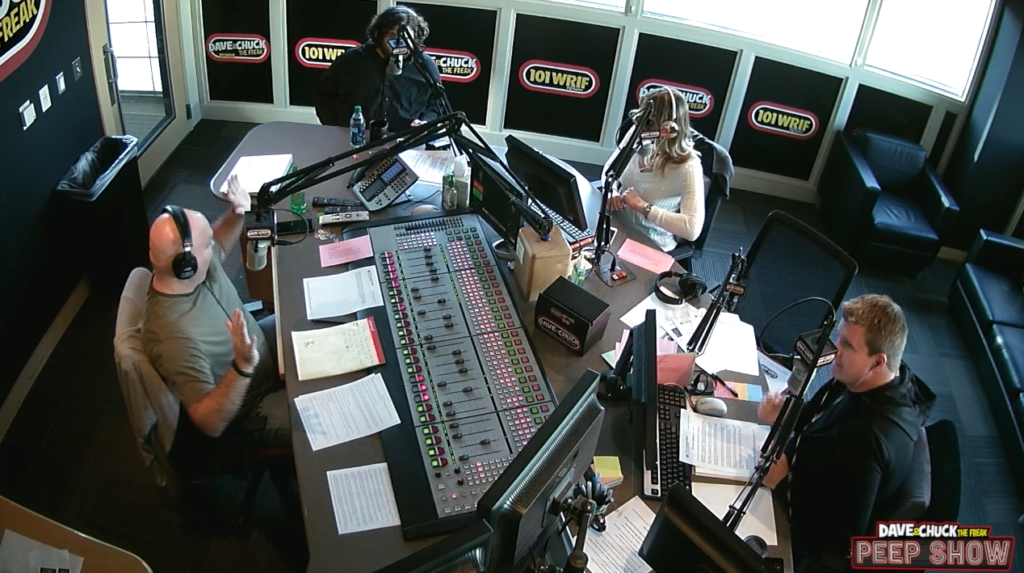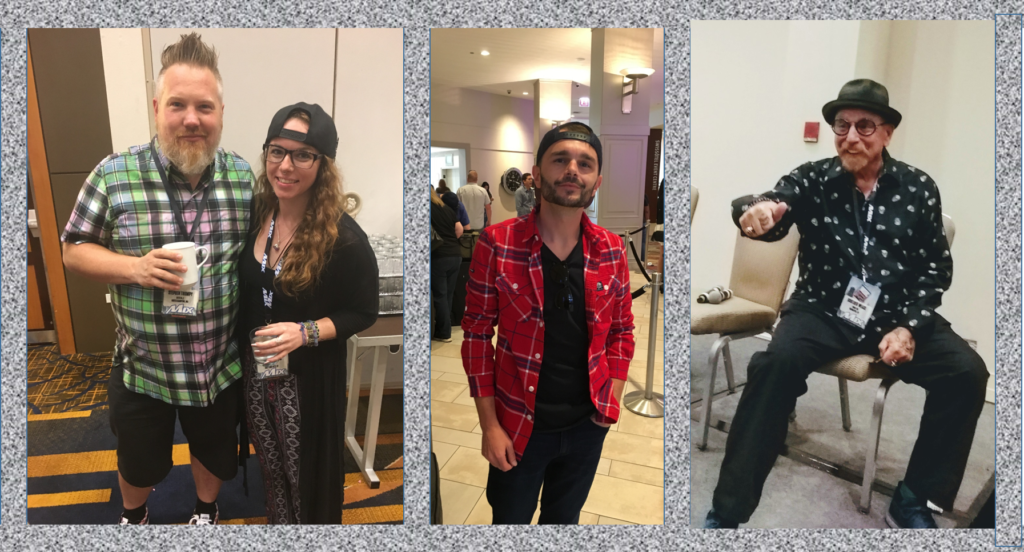Broadcast radio consultant Fred Jacobs explores the complex history of radio on television, a phenomenon which, though it may seem pointless and even contradictory, has accrued a significant following, and been the origin of some very popular modern programming.
____________________________________
Guest post by Fred Jacobs of Jacobs Media
You’re forgiven if you missed an important radio anniversary during the short week following the Labor Day holiday. While you were busily working on your plan for the remainder of 2019, a key milestone in radio and TV came and went:
The debut of “Imus In The Morning” on MSNBC in 1996
As radio historians know, Imus was the wildly successful morning guy on WFAN in New York, resurrecting a checkered, controversial career. On the Fan, Imus combined his ironic humor, character voices, along with real famous guests from sports, showbiz, and especially politics. And it was this last piece that truly resonated with listeners. Because unlike seeing these big names on shows like “Meet the Press,” the disarming Imus made them more comfortable, giving his audience insight into who these people really were.
Imus ran afoul of NBC in 2007 because of his controversial comments about the Rutgers’ women’s basketball team, ending a successful 11-year run of his morning show broadcast on cable TV. For MSNBC, the incident turned to lemonade when one of the rotating morning shows vying to replace Imus turned out to be “Morning Joe,” featuring Joe Scarborough and Mika Brzezinski, still going strong, especially in our overheated political environment.
As a radio guy, I was fascinated by Imus on TV from day one. First, the studio looked very sexy. But most intriguing was seeing radio come alive every morning – talent cueing each other, the eye contact, hand signals, and the reactions on Imus’ face to pretty much everything he was hearing and seeing as the show progressed.
At first, I thought the appeal of seeing a big-time radio show every morning on television was merely interesting to people in the radio business. But over time, I realized my fascination was shared by many, especially those getting their first glance at the sheer entertainment value of getting that “backstage” look at how radio works, what Imus and his cast actually looked like, how the show was produced and how it flowed each weekday morning.
“Morning Joe” became the next iteration of a morning show on MSNBC, incorporating many of the Imus lessons while innovating many of the characteristics of ensemble radio teams. We were fortunate to grab Joe and Mika for our Jacobs Summit in Philly back in 2009. And of course our vision was to give radio programmers and air talent the chance to see how the medium translates to television, while holding on to its morning radio essence.
And now other television hosts are working out of what look a lot like radio studios – CNBC’s Jim Cramer’s “Mad Money” is a great example.
His show mimics a radio studio (note the “ON-AIR” sign), as well as a sound effects board Cramer uses to accentuate points or play with callers over the phone. In many way, Cramer looks and sounds like a financial “shock jock,” arms waving, shouting, ranting, and raving. No doubt about it – “Mad Money” has a very radio-esque look.
And then there are all the “morning shows on TV,” whether network productions like “Today” and “GMA” or the myriad “Good Morning, Des Moines” shows that dominate television during the hours that were once the sole province of radio.
And yet, most radio personalities are gun-shy about their appearance, as well as the value of having cameras in the studio. We have seen this the past couple years in our AQ study with the “I have a face for radio” agree/disagree statement.
While it’s a tongue-in-cheek question, the fact is, 28% of our respondents (men more than women) agree or agree strongly about their appearance not being ready for prime time. In all fairness to Don Imus or Howard Stern, I think it has nothing to do with looks, and everything to do with curiosity, content, and performance.
Perhaps this is also an offshoot of the reality that video cameras have systematically made their way into many radio stations these past few years.

Techsurvey data continues to remind us that radio listeners are far more likely to stream video than audio. And video cameras, as well as skilled producers and editors have made their way into many clusters all over the country.
So, why not go a step further? When I look at some of the impressive download data I’ve seen for daily morning show videos, like the type WMMR’s Preston & Steve (“Daily Rush”) and WRIF’s Dave & Chuck the Freak (“Peep Show”) post every weekday, I have to wonder why more shows aren’t following suit.
There’s nothing especially complicated – just a few cameras in the studio, capturing one of the show’s best moments each morning. And because the entire show is recorded, it begs the question why some haven’t gone the Imus/MSNBC route of providing streaming on on-demand video for the entire show.
And I was encouraged while roaming the halls and attending sessions at the Swisôtel in Chicago last month at Don Anthony’s 31st annual Morning Show Boot Camp. I couldn’t help but notice how well put together many radio personalities are. Here we were at the industry’s conference of on-air talent, and by and large, attendees were not only well-dressed, but many sported a calculated “look.”
Whether it was the “Breakfast Club” from Power 105.1 in NYC, where the “Women’s Forum” where the entire group looked camera-ready, or just on-air people and producers hanging out at Boot Camp, it was impossible not to notice how good everyone looked, and why radio personalities are becoming increasingly cognizant of not just how they sound but how they appear.

At a time when broadcast radio is in need of an update to its traditional recipe, the visual, behind-the-scenes side of radio could change the game for fans and advertisers. It has become less about being a passive listener, and more about experiences – something that’s well within the capability of most radio stations and many of its leading personalities. And let’s not forget the matter of product placement.
This is especially true for so-called daypart personalities, often limited in their ability to show their emotions or humor because of limited time. Now, they have a stage with which to
Yes, it requires a different level of preparation, new skills, and a focus on different aspects of performance an entertainment. But to be continue to be a relevant part of people’s lives and routines, radio may have to reinvent its presence. Video is a powerful tool that only MTV and Vh1 had.
Until now.
Sorry, James Cridland. No lazy Buggles references here to “video saved the radio star.”
But it may, in fact, come true.
Fred Jacobs: President & Founder at Jacobs Media
Jacobs Media has consistently walked the walk in the digital space, providing insights and guidance through its well-read national Techsurveys.
In 2008, jacapps was launched – a mobile apps company that has designed and built more than 1,200 apps for both the Apple and Android platforms. In 2013, the DASH Conference was created – a mashup of radio and automotive, designed to foster better understanding of the “connected car” and its impact.
Along with providing the creative and intellectual direction for the company, Fred consults many of Jacobs Media’s commercial and public radio clients, in addition to media brands looking to thrive in the rapidly changing tech environment.
Fred was inducted into the National Radio Hall of Fame in 2018.